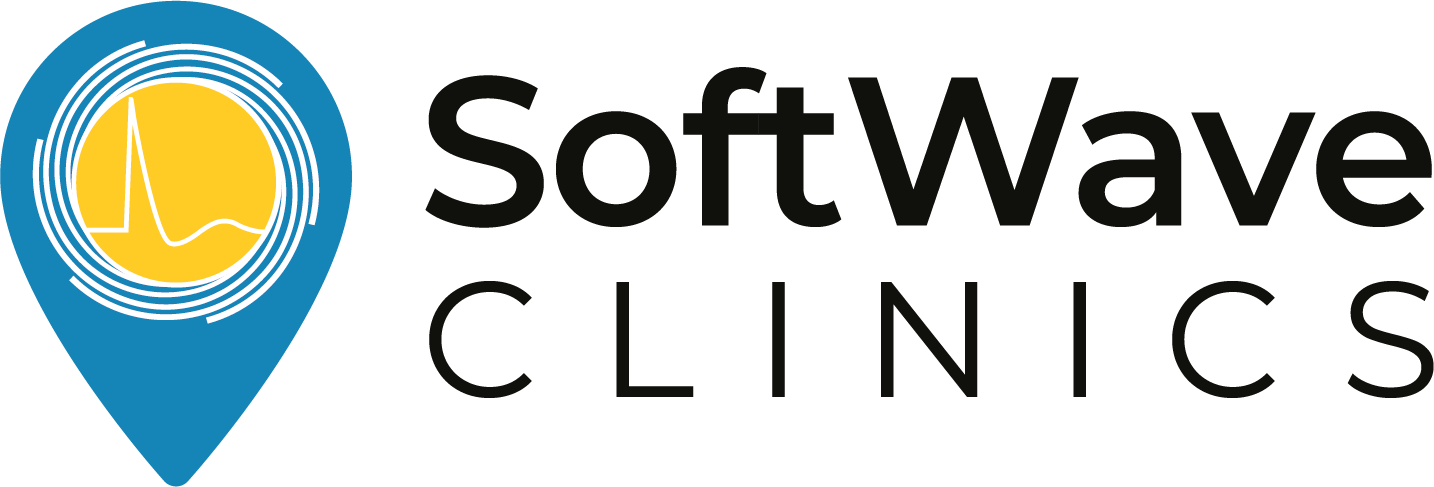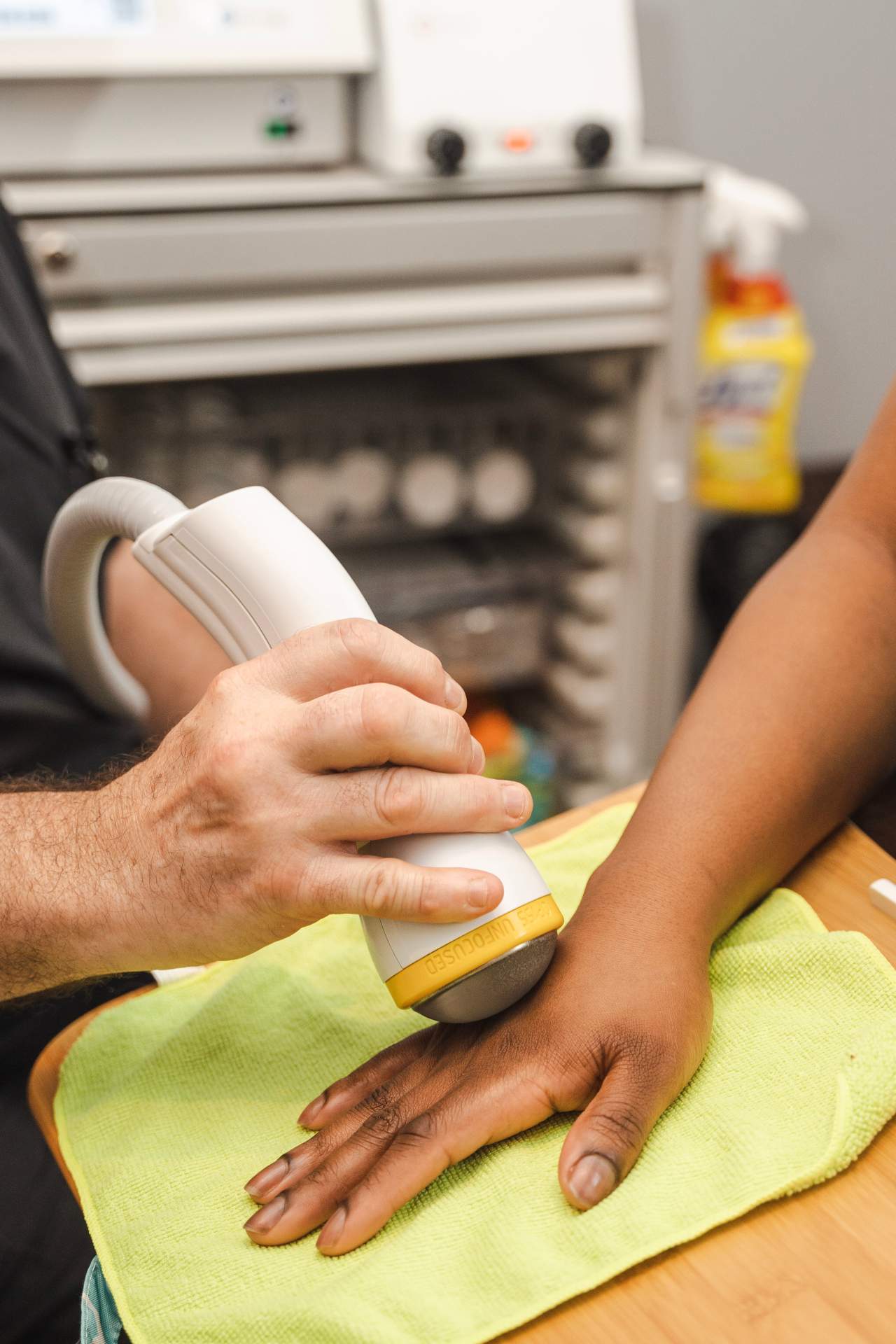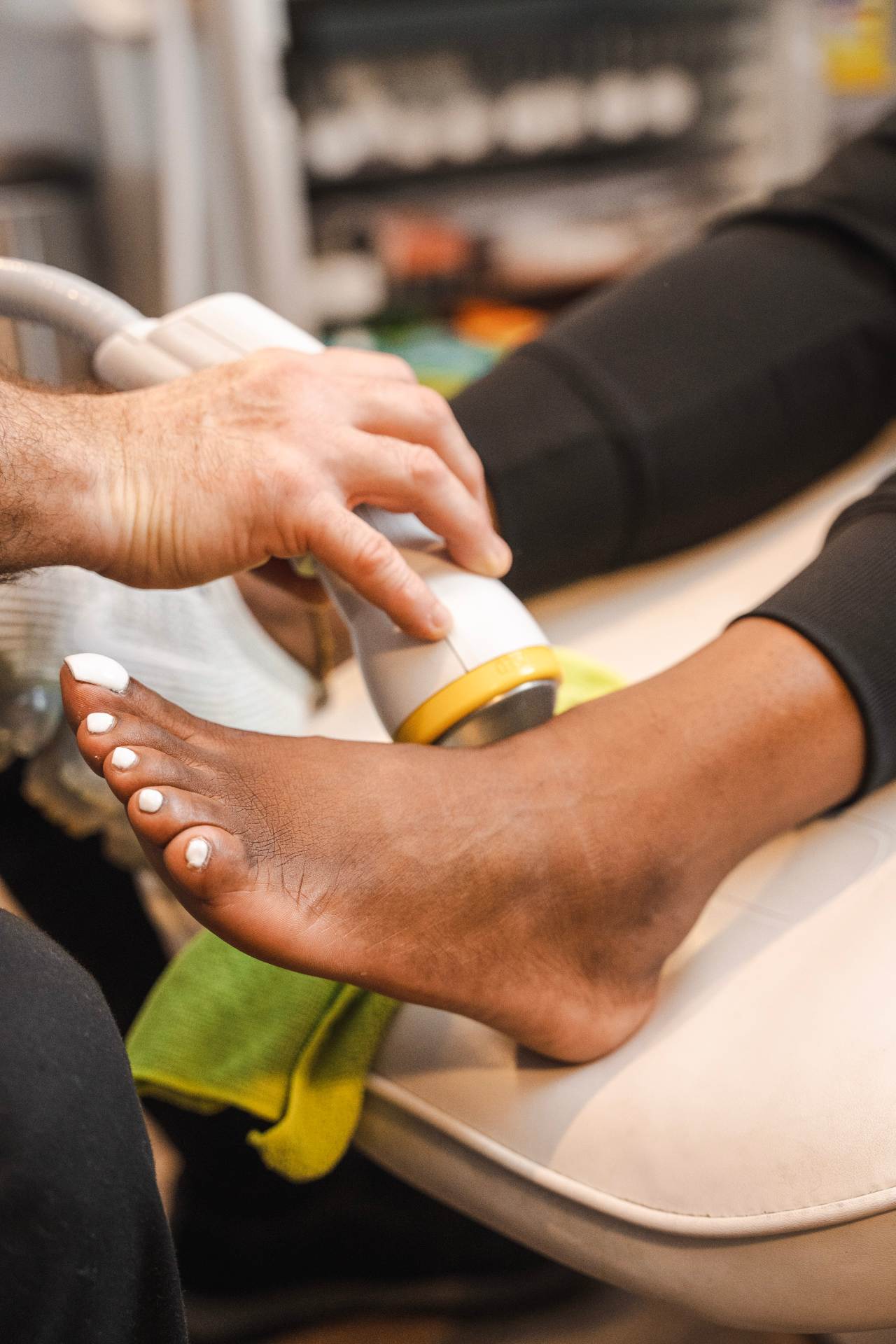Extracorporeal shock wave therapy (ESWT), commonly known as shockwave therapy, is a non-invasive treatment that involves the use of acoustic waves to treat various musculoskeletal conditions such as plantar fasciitis, calcific shoulder tendinitis, and tennis elbow. A common question that arises is, “How safe is shockwave therapy?” Generally, shockwave therapy is considered safe, with most patients experiencing only minor side effects like temporary pain, swelling, or bruising. However, as with any medical treatment, some potential risks and contraindications need to be considered, which will be discussed later in this blog.
How Does Shockwave Therapy Work?
Now, let’s delve into the mechanism of action of shockwave therapy. It involves generating shockwaves outside the body and transmitting them to the targeted treatment area. These shockwaves induce controlled microtrauma in the targeted tissue, which in turn triggers the body’s natural healing response. This response includes an increase in blood flow to the area, stimulation of collagen production, and the breakdown of calcium deposits. Collectively, these processes promote healing, reduce pain, and improve function.
What does Shockwave Therapy Feel Like?
The experience of undergoing shockwave therapy can vary from person to person, but typically, one might feel a series of rapid, intense pulses or ‘thumps’ against the skin. While it may cause some discomfort, it is generally not considered painful, and the intensity can be adjusted to ensure comfort during the treatment. Learn more about what shockwave therapy feels like
Risks Associated with Shockwave Therapy
Although shockwave therapy is widely considered safe and non-invasive, there are some associated risks:
- Pain and Discomfort: Patients may experience pain or discomfort during or after the treatment. This is usually temporary and often subsides within a few days.
- Swelling and Bruising: The treated area may swell or develop bruises. This is typically a short-term side effect and resolves within a few days to a week.
- Increase in Pain: Some individuals might experience a temporary increase in pain immediately following the treatment.
Contraindications: Who Should Avoid Shockwave Therapy?
There are certain individuals and situations where shockwave therapy is not recommended:
- Pregnancy: Due to unknown effects on the fetus, it is not recommended for pregnant women.
- Bleeding Disorders: Individuals with bleeding disorders or those on anticoagulant medication should avoid this treatment, as it may lead to increased bleeding risk.
- Cancer: Individuals with cancer, particularly at the treatment site, should not undergo shockwave therapy as it may promote tumor growth.
Other reasons for ineligibility include having a pacemaker, as the shockwaves may interfere with its function. In most cases, SoftWave therapy is still safe so long as the treatment area is 8 – 10 inches away from the pacemaker or defibrillator. A shockwave provider near you can help you determine the best course of treatment.


